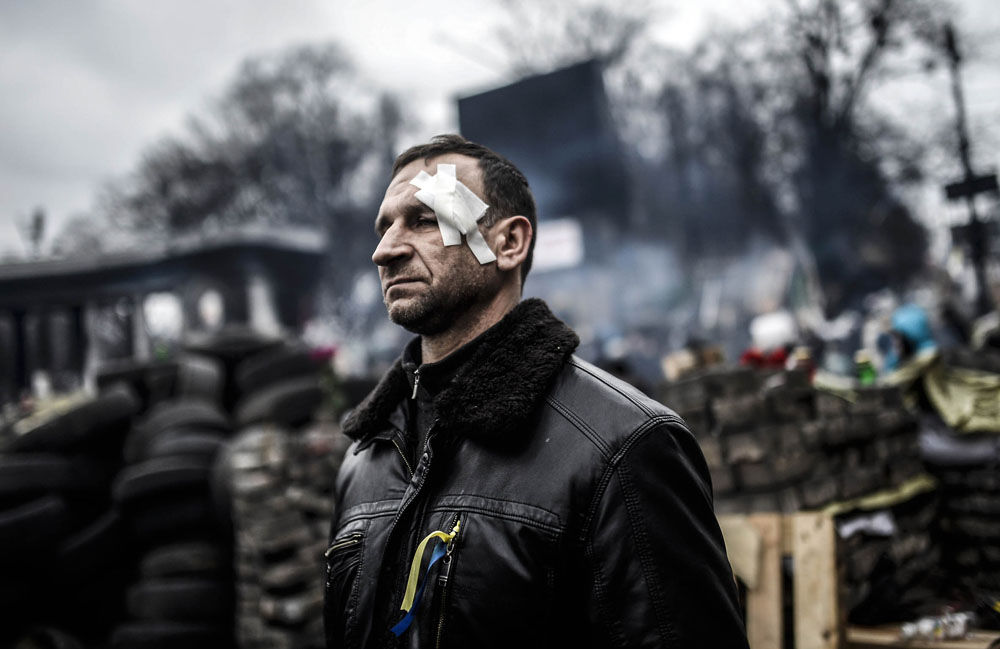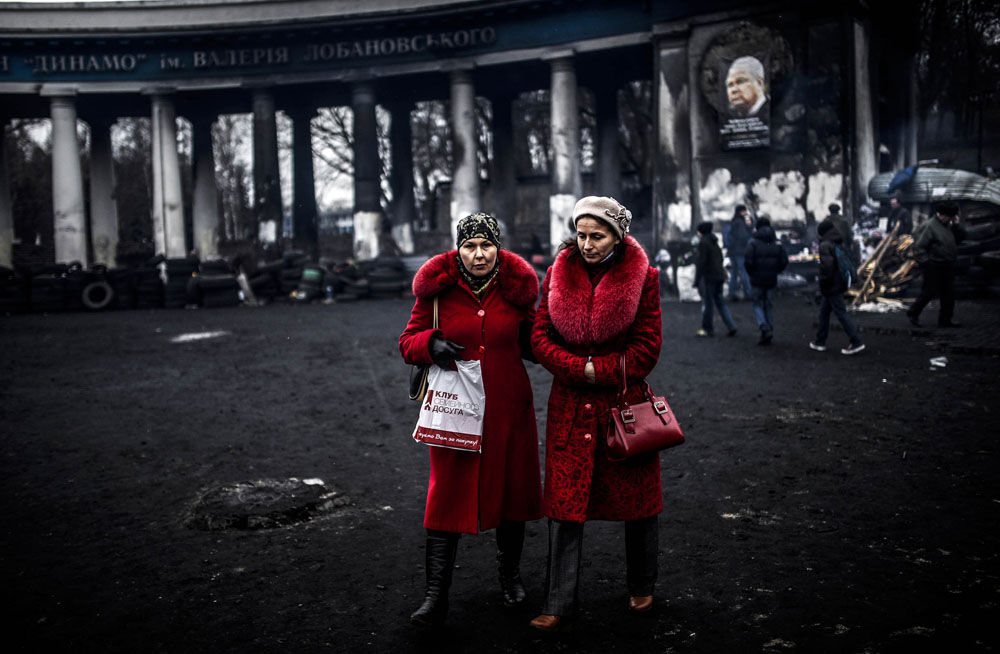A man holds a Ukrainian flag in Kiev's Maidan Square on the day the country's interim leaders unveiled their new Cabinet.
The experience was eerie. I was watching a documentary, The Square, about the 2011 Tahrir Square occupation when the lead character, Ahmed, let out a cry of delight: "The revolution has been won." At that very moment my radio blurted out a voice live from a different square, Kiev's Maidan. "The revolution has been won," it repeated.
Squares are famously potent political theatres. This year is a second showing for Ukraine's revolution, a third for Egypt's. Western TV viewers have cheered them all on. We thrill to see people hurling rocks at power.
Fire, smoke, bloodstained flags, broken heads, water, gas and sinister paramilitaries are Les Miserables for slow learners. We can sit with a front seat in the auditorium of history. It beats polling booths any day.
Tahrir and Maidan squares thus join Istanbul's Taksim, Tehran's Azadi, Beijing's Tiananmen, Prague's Wenceslaus, Athens's Syntagma, London's Trafalgar and a dozen other urban spaces the world over as icons of modern revolutionary politics. Their furniture is the barricade, their tipple the Molotov cocktail, their tonic the tear gas canister. They gather people in their thousands to sacred forums and invite the world to witness the latest trial of strength with a supposedly oppressive regime. Sometimes they even win.
If I were a dictator I would build shopping malls over these places, as Turkey's Recep Erdogan tried to do last year in Taksim's Gezi Park. At the very least, I would learn the message of Tiananmen: that a crowd once formed in a square is fiendishly hard to remove, and creates worse publicity worldwide than a dozen provincial massacres.
Russian President Vladimir Putin reportedly damned former Ukrainian president Viktor Yanukovych for failing to remove crowds immediately from Maidan, at whatever cost in brutality. It is difficult to imagine Putin allowing an occupation of Red Square.
'A collective effervescence'
Such gatherings have long fascinated philosophers. Crowds demonstrate what Durkheim called "a collective effervescence". To Freud, they released "deep historical convulsions". Even today, regimes do not tremble when confronted by millions on Facebook or Twitter. If "virtual politics" had power, no politician would leave his desk.
What social media can do is old-fashioned, acting as a means of communication, a means to an end. That end is live, human congregation. The square is where political actors put their bodies on the line, where their demands are expressed in flesh and blood. Once more, the play is the thing "wherein to catch the conscience of the king".
Yet such crowds are anarchic and chaotic. Their motives are essentially negative, those of opposition to power. Crowds destroy but seldom build. In Taksim Square, performance artist Erdem Gunduz simply stood silent. His message was nothing but defiance. In Kiev, a protester told the Guardian that Yanukovych's repression was "unbelievable in the centre of a civilised European city": he should be dragged to the square so everyone could line up "and spit in his face".

Scores of people have been killed and injured in protests that spread from Kiev around the country.
Many of today's activists are students and the offspring of an urban professional class. They may claim the legitimacy of street power, but they have no accountability to other classes or regions of their country.
Observers felt that was why Tiananmen Square saw no imitators outside Beijing, and why the protest was so easily if ruthlessly suppressed. In Belgrade at the time of the downfall of Serbia's Slobodan Milosevic, the protesting crowds were relatively ineffective until joined by busloads of workers from the provinces. What is said to have shaken Yanukovych were signs that the Maidan protest was spreading nationwide.
Tent and a blanket
To Elias Canetti, author of Crowds and Power, a crowd "needs direction if it is not to lose mass and die". The Cairo documentary constantly paraded the naivety of the protesters, brave as they were. They could wield the power of occupation, but it exerted little more than a veto on each new twist in the crisis. They seemed tossed this way and that by forces beyond their control, notably the well-organised Muslim Brotherhood. They could summon what they were to claim was "the largest demonstration in history"; but all they could chant was "power to the people". The argument had not advanced since the Bastille. As one parent said: "You think a tent and a blanket can solve all your problems."
Romantics sometimes refer to the "wisdom of crowds" and why "we are smarter than me". They ignore the capacity of totalitarians to manipulate the masses and forget the hysteria and cruelty that programmed crowds are capable of. Even a spontaneous gathering is unmediated and dangerous, as much a gift to demagogues as to aspiring democrats. Crowds rarely display judgment.
Last week seemed a case in point. The EU mediators in Kiev had negotiated with government and opposition, and then offered the Maidan crowd a package to resolve the crisis and lead to a disciplined transfer of power. Yanukovych would have a semi-dignified climbdown, a process Putin would have had trouble rejecting. Yet the crowd would have none of it. They howled down the messengers and refused to leave the square. Yanukovych lost his nerve and fled.

Women walk in front of the Kiev’s Dynamo stadium, one of the key gathering points of the protesters.
Ukraine is fortunate in having a democratic Parliament, which will be tested to the full. But, as in Egypt, the fact remains that a mob toppled a duly elected leader. That leader may have deserved all he got. He may have been corrupt, grotesque and murderous, a puppet in the hands of Russia. But he wore the threadbare tatters of electoral legitimacy, which the demonstrators did not.
A crowd in a square is not some ritual of democratic purification. It is the most primitive human response to a threat. It suggests a collapse of institutions, a failure of law and order, a usurping of party and leadership. A crowd can blow the fuse of a weakened regime and plunge the state into darkness. It seldom turns on the light of democracy.
Any upheaval can offer the hope of better times. But history is always a sceptic. Just a month ago another large crowd gathered in Tahrir Square, in an exercise in irony. It celebrated the army's return to power after three years of chaos. Sometimes even crowds crave order. – © Guardian News & Media 2014